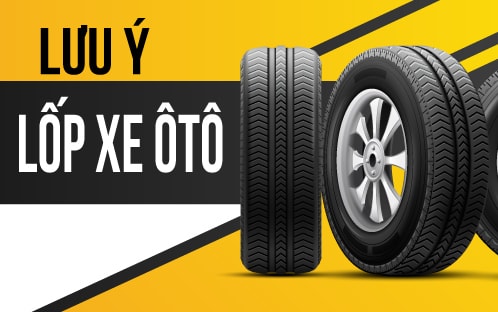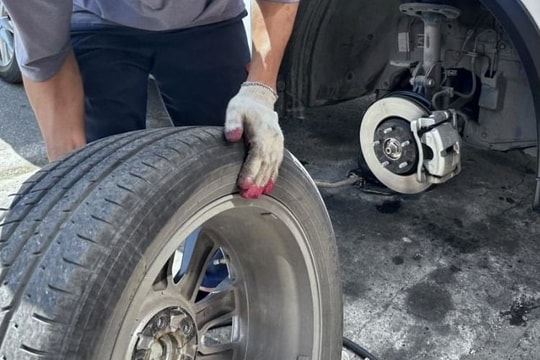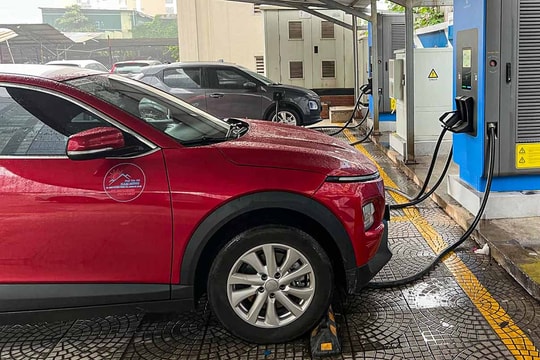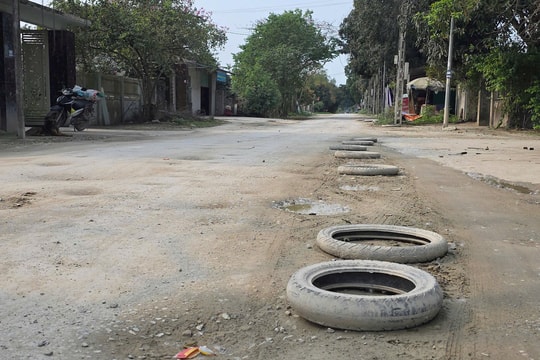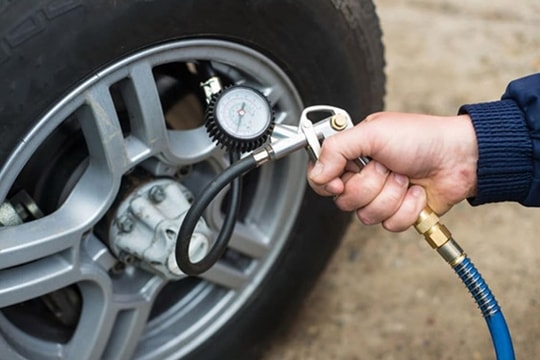More than half of Vietnamese drivers do not know how to take care of their tires.
Vietnam currently has about 2 million cars in regular circulation, the traffic situation is quite complicated. In the coming time, the number of cars will increase. However, most of the current car users do not know how to take care of tires, this can easily cause unsafety on the road.
In fact, only about 20% of drivers know how to properly care for their tires. That means 4 out of 5 drivers lack knowledge about tire care and maintenance.
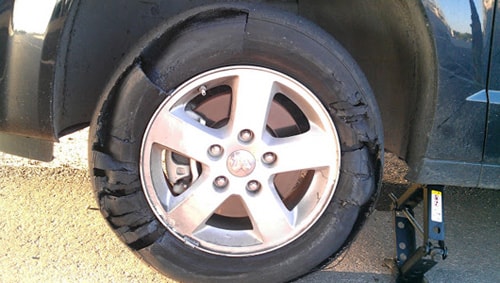 |
| Tires are the only connection between the vehicle and the road surface. |
Tires are the only connection between the vehicle and the road surface, bearing the entire weight of the vehicle and a load 50 times their own weight. Not only that, tires are also subjected to the continuous impact of driving operations such as turning, accelerating, braking and obstacles on the road... Therefore, tires play a very important role in the operation and safety of the vehicle while on the road.
Vietnam currently has about 2 million cars in regular circulation, the traffic situation is quite complicated. Statistics from Bridgestone Vietnam Company show that over 55% of customers do not know how to take care of their tires, 81% of customers do not know when to rotate tires and how to rotate them.
In fact, only about 20% of drivers know how to properly care for their tires. That means 4 out of 5 drivers lack knowledge about tire care and maintenance. Meanwhile, studies show that proper tire care can save 600 VND/liter of gasoline, while also helping to extend tire life by thousands of kilometers and bringing safety when traveling on the road.
Here are some tips from technicians on proper tire care:
First of all, it is necessary to maintain the optimal tire pressure. Check it regularly at least once a month, when the tire is cold, or after stopping the car for about 3 hours. The optimal pressure index is usually written on the driver's side door. The tire can suddenly lose pressure when the car goes into a pothole or hits the curb. Under-inflated tires will have low stiffness, causing the deformation process to occur strongly, increasing the destruction of the tire, in addition to reducing the inherent functions of the tire, losing safety.
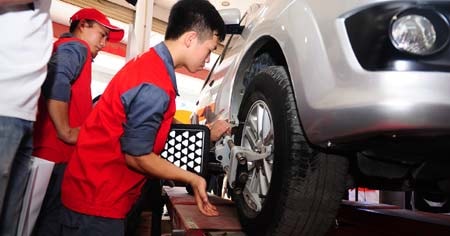 |
| Only about 20% of drivers know how to properly care for their tires. |
Research from the US National Highway Traffic Safety Administration shows that vehicles using tires with pressure 25% lower than standard have a three times higher risk of accidents.
Wheel balancing and wheel alignment adjustment should be done when changing or rotating tires at a tire repair shop or tire dealer. Wheel balancing helps reduce vehicle vibration and noise. Wheel alignment adjustment not only helps increase tire life but also eliminates the phenomenon of steering deviation (left or right) when driving straight.
Tire rotation helps all tires wear evenly, thereby increasing the life of the tire. During use, due to moving on uneven road surfaces, inclines or uneven loads on the vehicle, the four wheels wear unevenly. Normally, tires are rotated after about 8,000 km, or whenever uneven tire wear is observed. Tire rotation is performed several times during the life of the tire. Failure to rotate tires periodically will lead to excessive wear of some tires, which can cause tire explosions at high speeds, or loss of control in slippery road conditions.
Normally, in a front-wheel drive passenger car, the two front tires wear faster than the two rear tires, and the left tire tends to wear faster than the right tire. Therefore, the simplest way to rotate tires is to swap the right front tire for the left rear tire, and the left front tire for the right rear tire. However, this rotation method only applies to vehicles using tires of the same size. If the vehicle has a spare tire identical to the four main wheels, the tire rotation should be carried out in the usual way, but using this spare tire in the position of the right rear tire.
Tires need to be replaced in time. Many people still think that when the rubber in the groove is exposed, it is time to change the tire. But sometimes tires need to be replaced before that happens, otherwise they will explode on the road. If the car is used regularly, on average about 12,000 - 15,000 miles per year, the tire will wear out before the synthetic rubber layer degrades. But if you only drive the car on weekends, about 6,000 miles/year, the tire can age before it wears out too much.
Some car manufacturers advise customers to replace tires after 5 years of use even if they are not worn out too much. Tires are products with a limited lifespan, so after 5 years of installation, it is time to replace them, regardless of how much the car is driven. New tires that have not been used and are stored in storage, but were manufactured 5 years ago, should not be purchased for replacement. The life of the rubber and the fabric layers is no longer guaranteed if this time is exceeded. You need to look at the symbols on the tire to know the production date. The same goes for spare tires. Even if they are not actually used, spare tires still age.
To make the right decision when to change tires, in addition to relying on the wear of the tread and the age of the tire, the driver needs to carefully check by eye. Cracks, fabric fibers coming off the rear layer, or uneven tire swelling are signs that the rubber quality is poor, so they should be replaced. In addition, there is some practical experience showing that the car should consider changing tires after about 40,000 km. Of course, it also depends on many other conditions such as the type of road, how often the tires are rotated...
According to VNN
| RELATED NEWS |
|---|

